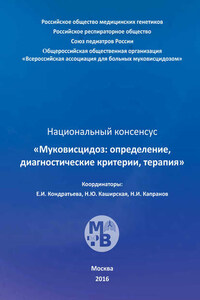Kudrin Foundation for the Support of Сivil Initiatives
Composite Authors:
V. V. Vagin (author, supervisor of studies)
E. A. Timokhina (head of the publishing project)
N. V. Gavrilova
N. A. Shapovalova
A. Yu. Fenin
I. S. Antsyferova
Question 1
What is initiative budgeting (IB) and what is it for?
IB is a set of diverse practice based on the citizens’ initiative to address issues of local importance with the direct participation of citizens in determining and selecting objects for spending budgetary funds, as well as subsequent monitoring of the implementation of selected projects.
At the same time, IB is a mechanism for determining priorities in spending budgetary funds with the participation of initiative groups of citizens.
Currently, in many countries, projects that meet the criteria for initiative budgeting are being implemented. The most important features include, in particular:
• participation of citizens at all stages of project implementation;
• distribution of funds of municipal and state budgets;
• regularity and annual repeatability of projects;
• public reporting on the implementation of projects.
Initiative budgeting is a part of the worldwide trend of increasing the scale of participation of territorial communities in determining the ways to develop their own settlements. In the EU countries, this phenomenon was called Community-led Development (CLD).
In each country, the involvement of citizens takes place in different ways, but everywhere the main goal is the participation of citizens in the decisionmaking process. This is especially important when decisions directly affect regional communities.
It is obvious that people are much more aware of the majority of problems of their settlements and, of course, the choice of citizens is more justified than the decision of the authorities. Unfortunately, the choice of authorities, without its discussion and approval by citizens, often leads to mutual rejection and growing hostility.
Question 2
How does initiative budgeting begin?
Initiative budgeting is the Russian version of the well-known participatory budgeting (PB), participation of citizens in budget decisions, which appeared in the late 1980s in Brazil. The emergence of PB practice was a response to the need for joint work of citizens and representatives of the authorities in solving urban problems. The emergence of PB became possible due to a combination of factors, such as the political will of the new government, its desire for democratization and the availability of support from below, from citizens willing to change the situation in their settlements.
Porto Alegre, a million city, the capital of the most southerly state of Brazil, Rio Grande do Sul, became a springboard for the implementation of the first major PB experiment. It is this most important administrative center of the region which is considered to be the starting point of the history of participatory budgeting. Porto Alegre found itself in the forefront of the progressive trend for a reason. The new left wing of the local government has shown itself to be strong enough to take advantage of the opened opportunities and organize the PB process. The catalyst was the oncoming urban movement from below by civil society.
The economic and social context of the reforms was similar to the situation in other large cities in Brazil. Port Alegre had a third of the population living in slums with limited access to clean water, sanitation, hospitals and schools. Reforms started in 1989 were aimed at overcoming these very acute problems. The PB became one of the mechanisms for their implementation. In 1989–2004, the PB practice was sufficiently entrenched and institutionalized.
Since the experience of Porto Alegre was successful, it began to replicate. At first it happened inside Brazil, and then it was transferred to other countries of Latin America. In 1996, at the UN Habitat conference in Istanbul, the PB was recognized at the international level as one of the best social practices. The following years were marked by active dissemination of practice in different countries.
IB Practices in the World
Reference
Brief History of the Development of Participatory Budgeting (PB) in the World over the Past More than 25 Years
The history of the emergence and evolution of PB around the world can be represented in five consecutive stages:
• The first stage includes the 1989 and 1997 experiments in Porto Alegre (Brazil) and Montevideo (Uruguay). It partially coincides with the terms of office of the two governments in Brazil in 1989–1992 and 1993–1996, when more than 30 municipalities launched their PB experiments. Rapid urbanization and an increase in the number of poor urban population, which was not provided with the necessary infrastructure, contributed to the emergence of PB. At the same time, there was a liberalization of the political trend in Brazil, which opened the window for reforms.
• The second stage coincides in time with the term of office of the next Brazilian government in 1997–2000, during which more than 140 municipalities began to implement the PB methodology, although with significant differences.














